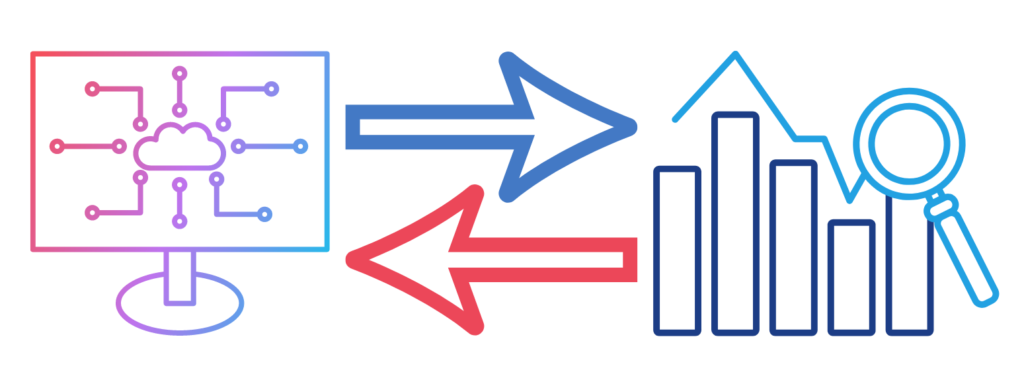
To implement IT Service Management (ITSM) in your business, you need to know about IT Infrastructure Library (ITIL). ITSM vs ITIL isn’t a clear-cut comparison. ITSM ensures the delivery and operationality of IT services. On the other hand, ITIL is a framework that helps with ITSM’s implementation. Simply put, however, both help with IT best practices.
In this ITSM vs ITIL article, I’ll explain the two terms and mention their benefits. In addition, I’ll also share with you a few other frameworks similar to ITIL.
ITSM vs ITIL—The Difference
Before anything else, we must define the two terms, ITSM vs ITIL. Let’s first look at ITSM, its definition, and its benefits.
What Is ITSM?
ITSM refers to any strategic approach an organization uses to design, build, deliver, and manage IT services. An ITSM focuses on providing IT as a service rather than a system or infrastructure.
For instance, you’ll be more concerned with ITSM processes than hardware or software. These processes include service request management, change management, IT asset management, incident management, etc.
The main actors of an ITSM process are the providers and customers. Their roles include:
- Providers deliver the services, and customers use them.
- A provider can be internal, e.g., the IT department. Internal customers are the organization’s internal employees or end users.
- Providers and customers can also be external. Third-party service providers and business customers are examples of external providers and customers.
But, how important is ITSM to your business?
For starters, you should use ITSM if you don’t want to be limited by costs, risks, and other business constraints in delivering quality IT services.
Not convinced yet? Let’s take a deep dive into ITSM benefits. Later, you can compare and contrast ITSM vs ITIL benefits for a bird’s-eye view of the topic.
4 Benefits of ITSM
Unless you have unlimited resources, you must strategically plan, build, deliver, and support IT services. Otherwise, you’ll expose your organization to unnecessary risks, costs, and resource waste. That’s why you need to implement ITSM.
ITSM offers several business benefits. Here are 4 of them.

1. Aligns IT With Business Goals
Without ITSM, your IT department and other business units will have separate agendas. This disconnect between departments can lead to unnecessary technology purchases and costs.
ITSM fixes the inter-departmental disconnect by providing you tools to improve collaboration and communication between the other departments and IT. Consequently, you can eliminate unnecessary costs by aligning IT with the needs of your business units.
2. Drives Continuous Improvements
Business environments and needs change over time. As a result, even if you’ve already achieved IT-business alignment, they could misalign in the future.
ITSM practices help you avoid IT-business misalignments that develop naturally with time. These practices involve continuous improvements to your processes and services in line with your business goals.
3. Reduces Problems and Shortens Resolution Times
Primarily, ITSM focuses on improving risk management processes, like problem and incident management. Good problem management can reduce any problem’s impact on your business and prevents it from recurring.
On the other hand, good incident management can help you resolve issues faster. When you streamline these two management processes, the quality and availability of your services will likewise improve.
4. Boosts Customer Satisfaction
Technological advancements and automation don’t always mean better services. That’s especially true if they don’t match your business goals.
Consequently, these perceived “improvements” don’t help with customer satisfaction. ITSM helps you avoid this pitfall. It enables you to constantly deliver highly-available, business-aligned services that add meaning to your customers’ lives.

Now that you’re familiar with ITSM and its benefits, let’s shift our attention to ITIL and see where it fits in the ITSM vs ITIL narrative.
What Is ITIL?
IT Infrastructure Library, or ITIL, is simply an ITSM framework. You can think of it as a guide and best practices for implementing ITSM.
Moreover, you should use ITIL as a reference if you’re implementing ITSM for the first time.
The ITIL ecosystem consists of documents, training, and consulting for incorporating ITIL best practices in your organization. Although several other ITSM frameworks exist, ITIL is the most popular.
ITIL focuses on the following management practice areas:
- General Management Practices (e.g., project management, risk management, information security management, etc.)
- Service Management Practices (e.g., IT asset management, incident management, service desk, etc.)
- Technical Management Practices (e.g., deployment management, infrastructure and platform management, software development and management.)
Importantly, ITIL can’t exactly tell you what actions you need to take. It’s one attribute that differentiates ITIL from similar frameworks, like MOF and ISO 20000.
ITIL’s latest version, ITIL 4, offers more flexibility in its implementation. The framework now incorporates DevOps and Agile principles. It also promotes collaboration and communication. Further, it encourages you to eliminate silos within your organization.
To fairly compare ITSM vs ITIL, let’s now look at the benefits of ITIL.
Here are three benefits of ITIL.
3 Benefits of ITIL
As an ITSM framework, ITIL incorporates all of ITSM’s benefits. Since we’re comparing ITSM vs ITIL, let’s discuss the extra benefits we couldn’t find in ITSM.
1. Access to a Larger Pool of Experts
Since ITIL is the most widely used ITSM framework, you’ll get access to its vast resource collection and expert pool. In the context of ITSM vs ITIL, you’ll easily find references and assistance for when you need to implement ITSM the right way.
2. Adapted to Modern Times
ITIL framework evolves with the trends in business and IT. With DevOps and Agile principles now part of the ITIL 4, you can use the framework more aligned with modern practices in IT.
3. More Flexible Than Other Frameworks
Unlike other frameworks, like COBIT and ISO 20000, ITIL is less prescriptive. In fact, ITIL advocates an adopt and adapt approach.
Basically, you just need to adopt the practices that apply to your organization. Plus, you can keep adapting its practices as you see fit.
This approach has certain benefits. For one, it gives you enough latitude to implement an ITSM framework in a way that best aligns with your organization’s unique goals.

Speaking of other frameworks, let’s now discuss the best frameworks you can use to implement ITSM.
What Are the Best ITSM Frameworks Besides ITIL?
As mentioned earlier, ITIL is just one of several frameworks you can use for implementing ITSM. If you find ITIL is too basic to fulfill your needs, based on the ITSM vs ITIL comparison we’ve just provided, you can explore other popular frameworks.
Here are 3 best alternatives to ITIL.
1. COBIT
You mainly use the COBIT framework for implementing effective governance in IT environments. The acronym has assumed meaning of its own over the years. COBIT initially stood for Control Objectives for Information and Related Technologies.
IT-business alignment is COBIT’s main goal. So, if you’re looking for a framework that achieves that purpose, you don’t need to look any further than COBIT.
In fact, US companies started using the COBIT framework as a way to achieve compliance with SOX or the Sarbanes-Oxley Act. The act is a federal law mandating publicly-traded companies to adhere to financial record keeping and reporting practices.
COBIT’s strong focus on security, governance, and controls makes it the ideal framework for risk reduction purposes.
2. MOF
The Microsoft Operations Framework (MOF) is a set of guidelines for establishing reliable IT solutions and services. Since it focuses on IT services, MOF is an alternative to ITIL.
MOF organizes service management processes into Service Management Functions (SMFs). Since Microsoft developed MOF, the documents occasionally mention Microsoft products.
So, if you’re already using Microsoft products, the recommendations in the documents can be handy.
3. ISO 20000
ISO 20000 is a set of standards for service management. Compared to ITIL, ISO 20000 is more prescriptive, specifying exactly what you must do and how to comply with the said standards.
External auditors validate adherence to ISO 20000 standards by awarding organizations certificates. ITIL, on the other hand, doesn’t award certifications.
While individuals within the organization can get an ITIL certification, the organization itself can’t. ISO 20000 certifies the organization, preventing the loss of credible certification when the talent moves away.
This way, a certified employee can’t dispossess the organization of its certified credibility by resigning or moving to another organization.
Final Thoughts
In this ITSM vs ITIL article, I explained ITSM as a strategic approach for planning, building, delivering, and managing IT services. Though often confused to be alternatives for each other, ITIL is a framework for implementing ITSM.
Instead of choosing one or the other between ITSM vs ITIL, I suggest adopting and adapting ITIL as the best-suited ITSM framework.
I also provided you with the benefits of ITSM vs ITIL best practices. These benefits include IT-business alignment, continual improvement, fast resolution times, and greater customer satisfaction. ITIL isn’t the only ITSM framework, though. Other frameworks, like COBIT, MOF, and ISO 20000, bear similarities to ITIL and include other features.
In case the article ITSM vs ITIL didn’t answer all your questions, I encourage you to check out the FAQ and Resources sections below.
FAQ
What technologies can you leverage to enhance ITSM initiatives?
Artificial Intelligence (AI) is one technology that can bolster IT Service Management. AI-powered ITSM tools can, for instance, automatically collect relevant data to speed up ticket resolution times. AI can save time and improve service desk efficiency.
Servicedesk vs Helpdesk—which one is best for ITSM?
Generally, you should use helpdesks for tactical and reactive purposes. Helpdesks are focused on resolving short-term issues. Servicedesks, on the other hand, are for strategic purposes and are focused on solutions to long-term IT problems. Read this helpdesk vs servicedesk article for a more detailed discussion.
What’s a good reason to study ITIL?
The ITIL certification is one of the most coveted IT certifications in the world. An ITIL certification can enhance your resume’s appeal, especially if you want a career in tech. It can open doors to higher-salaried positions.
What other IT areas are suitable for frameworks, like COBIT and ITIL?
Cybersecurity is one area that gains a lot from applying COBIT and ITIL best practices. One of the tips in our article about cybersecurity and IT strategy, for instance, is the importance of using standard frameworks.
What ITSM solutions are organizations turning to in light of increased adoption in remote work?
Organizations are now discovering the importance of cloud-based ITSM tools. These tools have built-in employee engagement capabilities and enable IT support availability. An IT support team available anytime, anywhere, is crucial in remote work environments. Read a more detailed discussion on service management and remote work.
Resources
TechGenix: Guide to the Most Widely Used IT Frameworks
Get acquainted with the most widely used frameworks and standards in IT.
TechGenix: Article Featuring COBIT 2019
Find out more about one of the leading governance frameworks for IT pros—COBIT 2019.
TechGenix: Introductory Guide to IaaS
Learn the basic concepts of Infrastructure as a Service (IaaS).
TechGenix: Introductory Guide to TaaS
Learn more about Testing as a Service (TaaS).
TechGenix: Guide to Reducing IT Support Ticket Volume
Discover the secret to reducing your IT support ticket volume.



